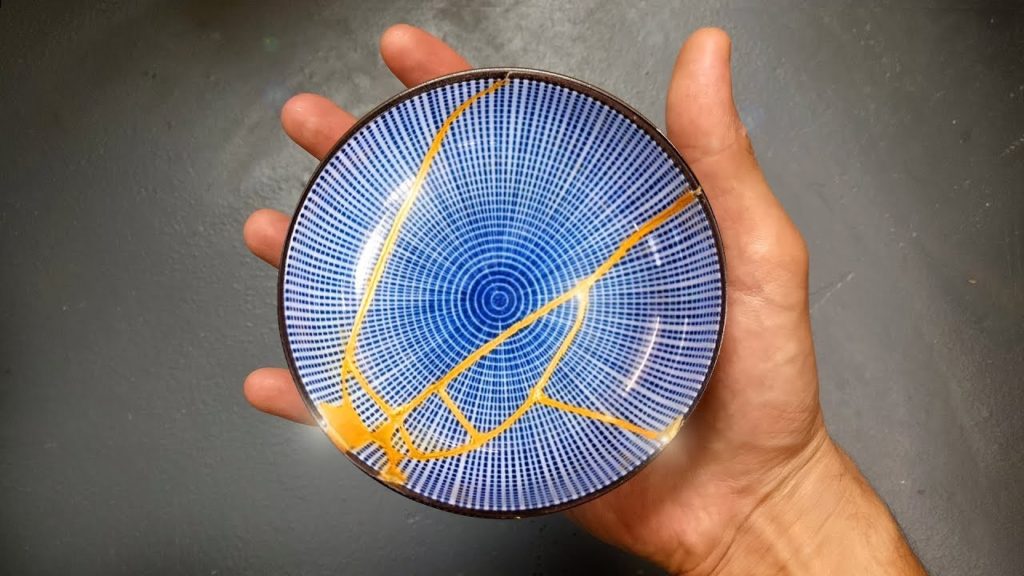Kintsugi is a pottery technique that glorifies imperfection and embraces the cracks that bring us together. The art-form dates back to the Japanese shogun Ashikaga Yoshimasa, who sent sent a piece of pottery back to China to be repaired. After the piece return, lackluster held together with only staples, he decided to have it mended with gold. The piece took on a new found glory, and this method is still used (slightly modified) today.
-Ernest Hemingway
“The world breaks everyone, then some become strong at the broken places.”
The shattering realization of the one mug in the cupboard happened to slip off the counter top is a feeling so gut-wrenchingly awful that is seldom the cause for celebration. What if I told you that there was a way to piece back the puzzle from destruction and make something beautiful? That is my test with this upcycle project.
There is a lot of information out there about how to preform kintsugi. One of my favorite tutorials is by the creator Alex French Guy Cooking. The one item I was unable to find was the golden powder.
He is super enthusiastic and a wonderful guide through the new found art form.
At this moment I have assembled the pieces and watched/read multiple tutorials on how to preform the mindful practice of kintsugi. I am planning on using a general ceramic adhesive, E6000 captured in figure 1 below. This is food safe general adhesive that I will mix with gold paint. From my research, this will make the item no longer food/heat safe. I will look into possibly finding a more food friendly medium, but in the mean-time I want to work on a pot/centerpiece.




6 Comments. Leave new
I love the background story. I wonder what kind of staples they used to repair that shogun’s pottery. Is that possible to reconstitute this old technology? And I think maybe making a decoration-purpose pottey will be a better as well as safer idea.
[…] last project (kintsugi) had an enormous impact on how I view design, and I think it could be a practice I continue to […]
Owen, Great choice for a project definitely challenging yet you will likely get a beautiful result. I like the background you gave the implementation of quotes and the YouTube link. You also did a good job showing your progress and explaining what you would do in the coming days. I hope the adhesive dosent change the color of the paint. Good luck on your presentation.
This is a very meaningful project! You really hit the nail on the head with this aesthetic. It is what I would say up-cycling is all about. Not oly that, but it also represents resilience and strength, which I love! I find it amazing that you branched out to a different culture for your inspiration and I wish I had done the same!. It seems like this is going to be rather difficult, so I wish you luck and I look forward to seeing how the adhesive/paint mixture works.
Owen, this is an awesome aesthetic. I have seen this before and have found the idea very fascinating and artistic. Do you think people purposely break things in order to achieve this aesthetic? For when you apply the paint, how will you avoid painting the actual piece itself that you don’t want painted?
Owen, I really like this aesthetic and I think it fits really well with the idea of upcycling/recycling, piecing it back together rather than throwing it out entirely. I’m curious as to what you’re planning on using as the actual pieces that you will be gluing together, but I do like the idea of this aesthetic functioning as a centerpiece.